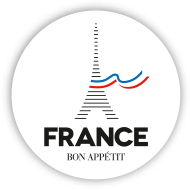
THE FRENCH
FOOD
INDUSTRY'S PORTAL
Webzine
taste it to info

A Star Butcher in One of France’s Star Industries
News /
Friday 12 June 2015
Desnoyer himself would prefer a slightly different introduction. “The word star has always bothered me, personally, ” he says. “Today, clients are remarking work that is well done. A good electrician becomes a hero. A good plumber becomes a magician! ”
The humble butcher is the owner of Paris’ first butchery cum restaurant, a place where hard work, savoir-faire and flavor combine.
An Illustrious Past
According to Desnoyer, French butchery technique predates even France. “The Romans, via their invasions, brought farming and butchery basics. Years or even centuries later, the French refined and enhanced French cuts. ”
The first French butchers experimented with each cut, deciding whether it was best roasted, grilled or slow-cooked, until they arrived at the mastery that, according to Desnoyer, “has become a reference in the industry. ”
Desnoyer himself joined these illustrious ranks after deciding at the beginning of high school to forego an academic career. With help from his father, he tried a few different trades before “landing ” in butchery. “I felt a powerful shock when I touched this noble substance known as meat! For 28 years, it has been my passion. ”
A Passion that Translates to Quality
It is perhaps above all due to this passion that French butchery has become so internationally renowned. French breeds offer diversity so vast that Desnoyer claims that “several tomes would not be enough to explain it .”
“The delicacy of a Gâtine, of a Maraichine, is in such contrast with the full-bodied nature of a Montbéliarde, of a Jurassienne, that we’re envied the world over. ”
French butchery techniques translate to a variety of cuts, including some of Desnoyer’s favorites: “the paleron[chuck] cut into steaks, the royal (a separation of the rumsteak [rump steak] and the faux-filet [sirloin], and the onglet [hanger steak]: I love their texture and their flavor! But a good Sunday roast with potatoes, what a delight!”
The Future of French Beef
While this French butcher has found some comparable delicacies in Japan and Australia, he finds that the “large palette of flavors and typicities differentiates us from flavors that are a bit too “’linear’ and flat in some regions of the world. ” It’s no wonder that some of the best beef in the world continues to hail from France.
“It’s true that thanks to our savoir-faire, we’re recognized and in great demand on an international scale. ” Desnoyer notes. “The whole world buys our best breeding bulls. ”
For him, the only change that might be made to this booming industry is a return to its origins. “We’ve gotten a bit lost, ” he says. “Keep it simple, without ever forgetting that bovines are and remain herbivores. ” Insight that may help French butchery reach even more dizzying heights.
Copyright: ouest-france.com / la-viande.fr





